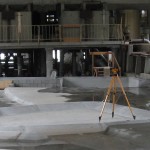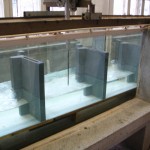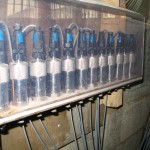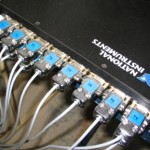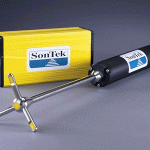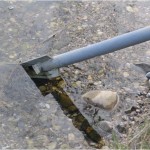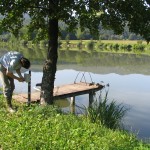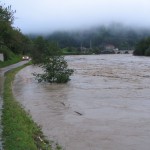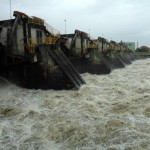So far more than 1000 studies have been completed.
In last 10 years the following areas have been investigated:
– Vertical slot fishways (physical and 2d models)
– Numerical and physical modeling of riverflows with inundations (PhD thesis)
– Determination of velocity fields using flow visualization methods (PhD thesis)
– Hydrodynamic forces during operation of gates (physical model)
– Dissipation chambers (physical model)
– Flood risk maps (2d models)
– Waves in supply channel due to operation of hydropower plant (1d model and field measurements)
– Hydropower plant dams, gates, spillways and stilling basins (physical models)
– Pump-storage systems – analysis of transient phenomena, optimisation of intake etc. (physical models, field measurements)
– Monitoring of water levels (field measurements)
– Measurements of stratification (field measurements)
– Hybrid models
– Determination of waste-water discharge
– Howell-Bunger valve
To perform physical hydraulic model studies we use the following:
– high-pressure pumps (1,5 bar up to 300 l/s)
– low-pressure pumps (up to 400 l/s)
– flume 1 x 1 x 15 m (up to 220 l/s)
– flume 0,5 x 0,8 x 10 m (up to 100 l/s)
– indoor and outdoor testing area
Also, the following measuring equipment is used:
– piezometers, Pitot tubes, point gauges
– strain gauges
– pressure probes
– 2d and 3d ADV probes
– electromagnetic flowmeters and standard thin plate weirs
Most of the tested flowmeters employ a pressure probe for determination of flow depth and a velocity probe for determination of flow velocity. These flowmeters are tested in a pipe with adjustable slope (I = 0 to 9 %). Actual discharge is measured with standard thin plate V-shaped weir (discharges up to 90 l/s), while the flow depth is determined with point gauges. Flowmeter’s results (data acquisition is perfomed by flowmeter software) are compared with actual discharges (i.e. values measured with V-notch weir).
Frequently the discharge is being measured at designed measuring sites, equiped with measuring flumes or weirs. In reality, the standardized solutions are often not applicable (e.g. measuring flume requires long approach section that can’t be provided at a given location, etc.). In such cases, somewhat modified solutions have to be applied, with their flow characteristics (e.g. discharge curve) determined in our testing flumes.
EXAMPLES:
– measuring site with measuring flume (determination of waste-water discharge)
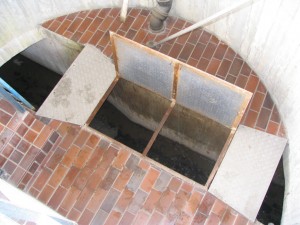
– measuring site with sharp-crested thin-plate rectangular weir (determination of discharge at fresh-water intake) 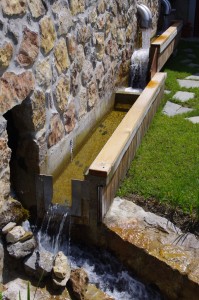
Both physical and numerical models have to be calibrated to ensure their accuracy. In most cases the calibration requires measured values of water flow discharges and water levels. In some cases, however, some other parameters have to be measured as well, e.g. suspended particles (for simulations of sediment transport) or water temperature profiles (for simulations of heat transfer or transport of polutants).
EXAMPLES:
– levelling: along crests of dykes, river banks and other locations of potential overflow during high-water events
– water level measurements: continuous with probes, and manual (of great value especially at flood events)
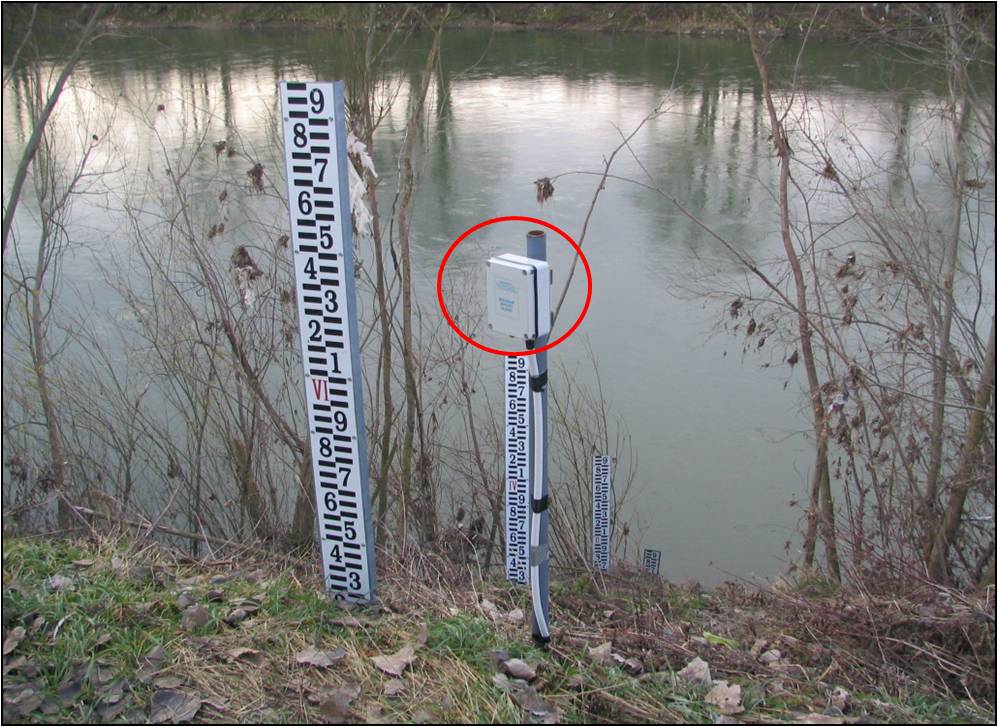

– measurements of river temperature profiles: especially in very cold or very hot days

